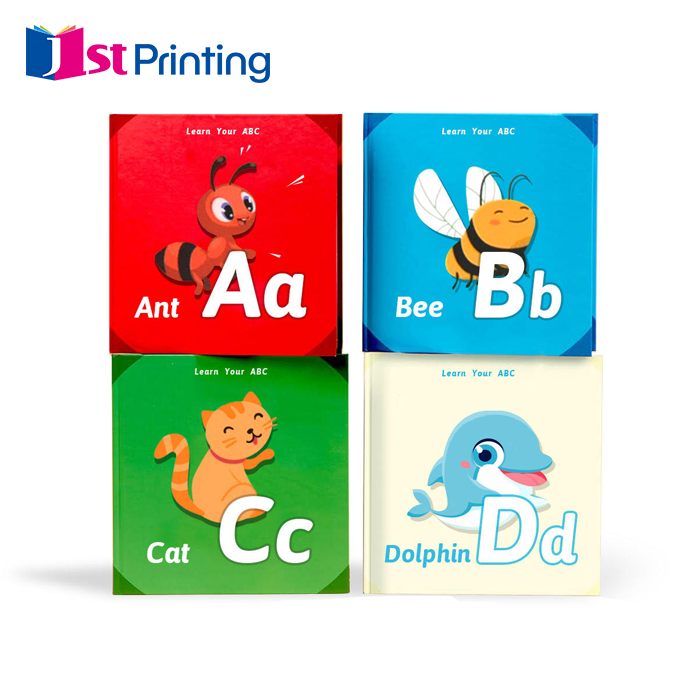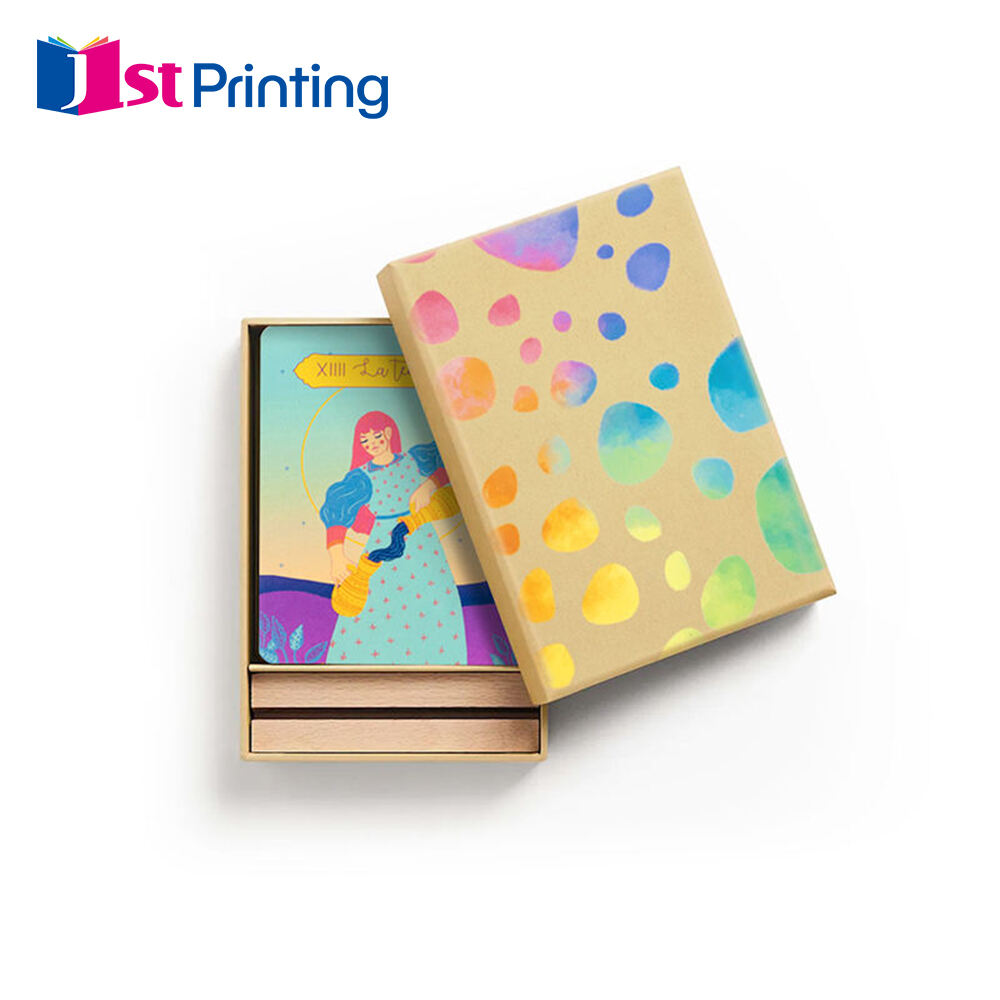Children's Books: How to Create Safe and Durable Products
Essential Safety Standards for Children's Books
Understanding ASTM F963 Toy Safety Guidelines
Understanding ASTM F963 matters because it's basically the gold standard for toy safety set up by ASTM International. The actual testing covers things like how easily materials catch fire, potential mechanical dangers, and whether chemicals used are safe for little hands. This applies particularly to children's books that have moving parts or other interactive features. When publishers follow these rules, they're doing more than just checking boxes. Parents get reassurance knowing their kids aren't playing with something dangerous, while kids themselves stay safe during playtime. Most serious book manufacturers stick closely to these standards anyway since nobody wants recalls or bad press over unsafe products.
Non-Toxic Materials Certification Processes
Getting certified under CPSIA (the Consumer Product Safety Improvement Act) matters a lot when making non-toxic kids' books. The whole certification process usually means sending in those detailed material safety data sheets, plus occasionally going through some pretty rigorous third party testing too. When we bring in outside testers, it helps us stay on top of all the safety rules while pushing ourselves to meet even better standards over time. Parents really appreciate this extra check because they want to know their little ones aren't exposed to anything dangerous in what they read. After all, who wouldn't want peace of mind about something so close to their child?
Implementing Rounded Corners and Chew-Resistant Edges
When it comes to making kids' books safe, we need to think about things like rounded corners and edges that resist chewing. Those rounded corners really matter because little hands can get cut otherwise, which nobody wants when kids are playing with their books. For babies and toddlers especially, having those chew proof edges makes all the difference since they tend to put everything in their mouths. I always go for materials that hold up against gnawing but still feel good to touch. The stuff needs to last through countless bites without falling apart or becoming a choking hazard. All these safety features aren't just extra touches they're part of what makes a quality children's book worth buying in the first place.
Selecting Durable Materials for Longevity
Comparing Paperboard vs. Cloth Book Materials
Choosing materials for kids' books means weighing paperboard against cloth, each with its own perks. Paperboard stands out because it doesn't tear easily, which makes sense for picture books that get handled constantly by little hands. Parents love board books made from this stuff since they survive the rough treatment from babies learning how to hold things properly. Cloth books bring something different to the table though. Toddlers really enjoy running their fingers over fabric pages, getting that extra sensory input while exploring stories. Environmental concerns matter too. Making paperboard sometimes leads to cutting down trees, while cloth manufacturing creates problems with fabric scraps and chemicals used during processing. What we see happening in stores shows parents want what works best for their families. Some go purely for one material, others opt for mixed format books that give both toughness and touchability where needed most.
Reinforced Binding Methods for Frequent Use
Strong binding techniques matter a lot if we want kids' books to last after all those times they get picked up and flipped through. Methods such as Smyth sewing and spiral binding stand out because they let books lie completely flat without worrying about pages falling apart. Take Smyth sewing for instance it works by actually stitching through the folded sections instead of just slapping glue everywhere, making it much tougher than regular bindings. That extra strength really counts when little fingers are constantly opening and closing storybooks. Spiral binding offers something different too it gives that nice bendy quality where pages can turn in any direction, not just forward or backward. Most book makers know this stuff matters since durable books simply last longer between replacements. When publishers stick with these better binding approaches, what happens? Books survive all sorts of rough handling from curious toddlers and stay around in school classrooms and home shelves way past their expected shelf life.
Water-Resistant Coating Options
Kids' books need water resistant coatings if they're going to last through all those inevitable spills and sticky fingers. The market offers several options including UV coatings and aqueous coatings, each with its own perks. Most parents will tell you these coatings really help when it comes time to wipe off juice stains or whatever mess kids manage to get on pages. Aqueous coatings tend to be better for the environment too and won't break the bank much. UV coatings give that shiny look parents love but come at a higher price point. Looking at what kind of book we're talking about makes all the difference though. Picture books probably need something different than storybooks that get handled constantly. Publishers who want their books to survive bath time, snack time, and everything in between should definitely think about getting the right coating job done. After all, nobody wants a beloved bedtime story turning into a soggy mess after just a few readings.
Child-Safe Printing Techniques
UV Varnish vs. Plastic Lamination Safety
For parents concerned about safe printing methods for kids' materials, knowing what separates UV varnish from plastic lamination matters a lot. UV varnish stands out as greener option since it cuts down on those harsh chemicals that regular laminates tend to release. That makes all the difference when thinking about keeping our environment clean. On the flip side, plastic lamination does give books a tougher shield against damage, something publishers sometimes need for storybooks that get handled constantly by little hands. Kids do love their books after all, flipping pages repeatedly until they fall apart. So many folks actually go for UV varnish because it keeps children away from stuff that might be bad for them. And let's not forget about how important finish quality really is too. Books with properly applied finishes have smoother edges and surfaces, making it way less likely someone will end up with a paper cut or some other minor injury while reading.
Using Soy-Based Inks for Non-Toxic Color
Switching to soy-based inks for printing kids' books represents a meaningful move towards greener practices and safer reading experiences. Unlike traditional petroleum-based options, these plant-derived inks cut down on VOCs significantly, which means fewer harsh chemicals lingering around little hands after storytime. Parents will notice the difference too since soy inks deliver bright, rich colors that stay vivid even after repeated readings. Many publishers have started adopting this approach lately because both parents and educators want books that look great while keeping kids safe from toxic substances. What makes soy inks particularly appealing for picture books is how well they handle detailed illustrations without fading or smudging, something every parent appreciates when their child grabs a book again and again.
Bleed and Margin Requirements for Tear Resistance
Getting the right bleed and margin settings makes all the difference when making kids' books that won't fall apart after a few readings. The bleed area goes past the actual cut line of the book, giving printers some wiggle room since nothing cuts perfectly every time. Good margins leave enough space around whatever appears on the page so nothing gets lost in the trimming process. When publishers increase those binding margins specifically, they actually create stronger books that resist tearing, especially along the spine where most damage occurs from little hands opening and closing them repeatedly. Most publishing guidelines suggest certain minimums for these margins in picture books and storybooks because content placed too near the edges tends to get trimmed off completely during manufacturing. This attention to detail not only keeps pages intact but also makes sure illustrations and text remain visible and legible for children who might otherwise struggle to see important parts of the story.
Designing Interactive Yet Sturdy Features
Securing Pop-Ups and Flaps with Double-Stitched Seams
Designing kids books often means including those cool pop ups and flaps that little hands love to mess around with. But if we want them to last through all that interaction, we need something durable. Double stitching really helps keep those parts secure so they don't fall apart after just a few plays. The trick here? Getting the right tools for the job. Special needles and thread made for bookbinding work wonders without ripping up the pages. Most parents will tell anyone who'll listen how much better they feel knowing their kid can pull on those tabs all day without worrying about breaking anything. After all, nobody wants to replace a favorite storybook every time it gets handled. And let's face it, when books stay intact longer, everyone wins – especially when toddlers get their tiny fingers everywhere!
Testing Sensory Elements: Crinkle Paper & Textured Fabrics
Adding things like crinkly paper pages and fabric patches to kids' books really makes a difference in how they learn through reading. When little hands get to touch different textures while listening to stories, their brains start connecting all sorts of information at once. But before putting any special materials into books for tots, publishers need to check them out properly. We run all kinds of tests on these additions to make sure nothing comes loose after a few weeks of rough handling by excited young readers. Good quality sensory features do more than just catch attention they actually keep kids coming back to the same book again and again because reading becomes something fun to do with both eyes and fingers involved. This kind of hands-on approach helps build those important skills from early on.
Weight Distribution for Easy Handling by Small Hands
When it comes to making great kids' books, getting the weight just right matters a lot because little hands need to handle them easily. Getting this right really affects whether kids will actually want to pick up and read these books. Most designers work hard to find materials that aren't too heavy but still hold up over time. Real tests with actual kids show pretty clearly what works best - most prefer books they can lift without struggle but won't fall apart after a few readings. When publishers listen to what kids actually do with books rather than just guessing, they end up creating stories that stay in circulation longer and help培养 (cultivate) that lasting connection between children and reading that everyone hopes for.
Featured Customizable Children's Book Solutions
Entertaining Narratives with Reinforced Binding
When it comes to kids' books, there's something really important about how good the story is working together with how tough the book actually is. Parents know this all too well after seeing their favorite tales fall apart from constant use. Reinforced bindings make a big difference here. These stronger spines and covers help books survive those rough moments when tiny fingers tear pages or bend corners during bedtime readings. Take "The Adventures of Billy Bear" for example – this popular interactive storybook has held up remarkably well over years of nightly readings despite being handled by multiple generations of curious children. What we're seeing now in the world of personalized children's literature is publishers focusing more on making sure these special books last longer than just a few months on the shelf. After all, what's the point of creating amazing stories if they disintegrate before a child finishes growing up?
Vibrant Illustrations on Tear-Resistant Paper
Kids books with bright pictures printed on tough paper create a fun reading experience that lasts longer than regular books. When kids see all those colors and shapes, their brains actually remember things better and start imagining all sorts of stories. Take those customizable card books for instance they use special material that doesn't rip easily so little hands can flip pages without worrying about damaging them. The pictures stay sharp and clear even after months of handling, which means children keep coming back to explore new details. Most parents will tell you that good picture books aren't just pretty to look at they help build important skills while keeping young readers engaged for longer periods.
Personalized Storybooks with Safety-Certified Components
Personalized kids books have taken off big time lately, and safety has become a real concern when it comes to customization options. Parents want their little ones to enjoy stories made just for them without worrying about harmful stuff getting into those pages. Take Card The Perfect Expression for instance these storybooks actually use materials that meet strict safety requirements, so parents don't have to stress over potential hazards. Looking ahead, we might expect even more attention paid to safety measures as publishers figure out how to keep making customized books while still keeping children protected from anything dangerous.


























